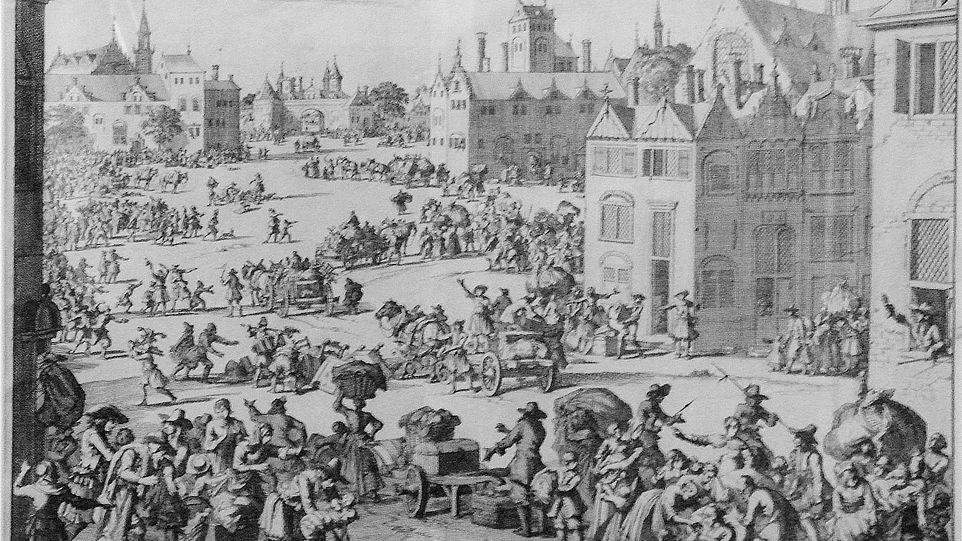The existing literature on the medieval economy has often focused on risk as it manifests in catastrophic events like famines or plagues. However, routine risk management over extended periods was also significant. PhD student Greg Salter makes a compelling case that the estate of the Bishop of Winchester achieved routine risk management through diversification. By examining medieval estate accounts through the lens of modern financial risk management practices, Salter’s work sheds new light on the late medieval economy and its developmental trajectory.
The Bishop of Winchester was a prominent public figure, advising monarchs from Edward III to Henry VIII. The bishop also owned a diverse estate from Somerset to London. The estate, comprising 60 distinct manors, was more than just a symbol of the bishop’s power. It reflected his immense financial wealth.
In the fourteenth and fifteenth centuries, the average annual revenue generated by the estate was around £4,500 per year (today’s value c. £4m), making the bishop one of the wealthiest landlords in the country. The largest share of revenues came from arable and pastoral agriculture, which produced goods such as wheat and wool. Smaller shares came from rental income, from a diverse portfolio of tenanted farmland and urban properties, and feudal dues and fines levied at the manorial courts. To manage routine risk in this predominantly agrarian society, the bishop employed a strategy of crop diversification.
Risk Management Strategies in Medieval Agriculture
In modern financial risk management, an enterprise has the choice of four mitigation mechanisms: risk avoidance, diversification, hedging, or transfer. Some of these strategies were ineffective or unavailable in the fourteenth century. Hedging was impossible in medieval agriculture since there were no markets for derivative instruments. In an overwhelmingly agricultural economy, the opportunities for risk avoidance were limited. The most readily available risk management mechanisms for landlords such as the Bishop of Winchester were risk diversification and transfer.
The decision-making hierarchy of the estate is depicted in the diagram below, akin to modern senior and middle management. The strategic decisions made by the bishop and his steward shaped the estate’s risk exposure, setting boundaries within which bailiffs (regional middle management) and reeves (local farm managers) implemented tactical and operational decisions. In this study, annual crop sowing decisions made by reeves provide the material for analysing risk diversification.

The primary data sources for this analysis are translations of two sets of Winchester estate manorial records from 1301 and 1409, known as ‘Pipe Rolls’ because of their rolled-up storage. These documents, written in medieval Latin on parchment, follow a common template across the estate. Compiled annually each autumn after the harvest, they meticulously list all manorial income and expenses, cash transactions, quantities of each crop sown and harvested, and changes in livestock numbers.
For a comprehensive analysis, the Winchester estate manorial records were enriched with long-term data on crop yields and grain prices from two online databases, CropYield and the Global Commodity Prices database.
The Diversification Advantage
I conducted two simulations utilizing data on sown quantities of seed and acreages from estate records. Treating crops as elements of an investment portfolio, with contributions weighted according to the sown acreages of each crop, I can determine the amount of risk reduction that resulted from crop diversification.
The first simulation aimed to answer the question: “Based on experience from the previous twenty years, what harvest might we expect from this year’s sowing decisions?” I derived a distribution of hypothetical harvests by applying historic yield figures for the preceding twenty years to the sowing decisions of 1301 and 1409. Then, I quantified changes in the coefficient of variation for a three-crop ‘portfolio’ consisting of wheat, barley, and oats.
The results demonstrated a negative correlation between the yields of oats and wheat/barley. In simpler terms, a poor barley harvest was partially offset by a good oat harvest, highlighting the benefits of diversification. This negative correlation resulted in counterbalancing yield variations among the three crops, ultimately reducing the coefficient of variation (‘CV’) of the overall yield. The value of diversification is clear when comparing the variability of the main cash crop, wheat, with the variability of the entire crop portfolio. (See the yellow highlights in the table.)

The second simulation models the expected cash outcome of the harvest. Building on the sowing density and acreage allocation used previously, this simulation incorporated data on the disposal of the harvest from the manorial records and historical crop prices from the grain price database.
To estimate the expected cash return from the harvest, first I aggregated from three quantities in the manorial records: grain retained for seed for the next year, grain for own use (such as animal fodder), and grain sold or purchased. Then, I applied the ‘seed’ and ‘own use’ requirements to the twenty preceding hypothetical harvests to determine the balance available for sale or purchase each year.

The cash outcome simulation revealed the production challenges faced by the bishop in 1409. The expected cash yield was lower than it had been a hundred years earlier and exhibited greater volatility.
Exploring ‘What If’ Scenarios
The models enable the exploration of hypothetical scenarios, allowing for the exploration of the decision space occupied by the bailiff and local reeves to estimate the results of different crop sowing decisions. These counterfactuals underscore the risk management choices within medieval agriculture.
For example, had the manor in 1301 exclusively grown wheat and oats, the crop-yield coefficient of variation (CV) would have decreased to 18%. While operational efficiency would have improved, it would have come at the expense of reduced cash revenue.
In 1409, the expected cash revenue might have doubled to £16.27 if the manor had chosen to sow only wheat. However, this decision would have necessitated a higher labour peak during ploughing time and introduced the added risk of total reliance on the market for oats and barley. Furthermore, it would have increased the variability of the yield from 13.2% to 19.4%.
Conclusion
Decision-makers in the past showed an understanding of risk in their routine economic decisions. My research illuminates one risk management strategy embedded in the medieval economy and provides a novel perspective on the dynamics of decisions made by key economic actors. The application of risk management techniques to the decisions of medieval bishops and their estates’ staff enhances our understanding of both the decision spaces these actors occupied and the effects their decisions had on long-term economic development.




